




| Ampedus cinnaberinus (Eschscholtz, 1829) |





|
|
Scientific name: Ampedus cinnaberinus (Eschscholtz, 1829) Common name: Other names: Often erroneously called Ampedus cinnabarinus. French name: Ampède cinabre Order: Coleoptera Family: Elateridae Wingspan : 11-15 mm. Biotope: Deciduous and mixed forests. The larvae mainly grow in dead wood of English oak (Quercus robur) or of other deciduous trees. They are found in still hard wood and also under barks. Geographic area: Palaearctic region. Observation period : Nymphs moult to imagos in autumn. Imagos overwinter inside the pupal case and emerge late March, early April. |
Ampedus cinnaberinus is one of the black and red click beetles of the Ampedus genus for which it is often difficult to tell the species apart on picture. The body is elongated and flat. The pronotum is black and narrows at the front since its base. It is covered with russet or sometimes blackish hairs. There is a central groove that is only visible in the first basal third. The elytra are a uniform red colour and show longitudinal rows of pits. The antennae, of 11 articles, and the legs are black. The tarsi are a little paler. Ampedus sanguineus, which is more linked to conifers, has its pronotum covered with black hairs (like some Ampedus cinnaberinus). The basal groove is clearly much longer than one third of the pronotum length (but this is not so easy to see). Ampedus sanguinolentus has its thorax covered with brown hairs. The elytra show a black central mark which is sometimes reduced to a single streak on one third of the length of the elytra. Ampedus rufipennis shows black hairs. The antennae are strongly toothed, including the third article. This is one specificity of this species. Ampedus aurilegulus shows almost parallel edges at the base of the pronotum which then tapers near the front. The punctuation of the pronotum and the shape of the antennal articles are also used by determination keys to tell species apart. The larvae of Ampedus cinnaberinus are predatory and feed on other larvae. |
| [To know more about the Ampedus cinnaberinus] [Next picture] [Top] |
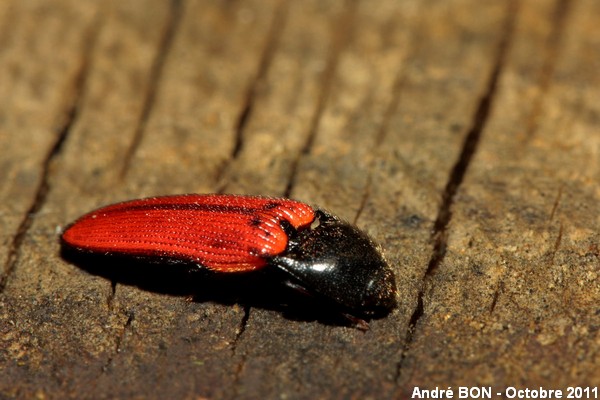
|
I have found this Ampedus cinnaberinus on an oak stump where I was looking for myriapods to observe. It was hidden under the bark where it was maybe staying to overwinter. The pubescence on the pronotum is clearly russet. I am not totally sure of the species identification. A confirmation by an expert would be welcome. |
| [To know more about the Ampedus cinnaberinus] [Next picture] [Previous picture] [Top] |
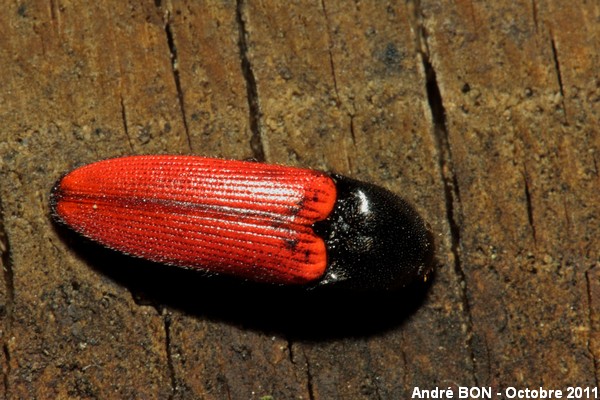
|
This upper side view would have been far better with a ring flash rather than with my current on-camera flash. The shadows make it difficult to see the general shape of the insect. However we can see that the pronotum is narrowing since the base. |
| [To know more about the Ampedus cinnaberinus] [Next picture] [Previous picture] [Top] |
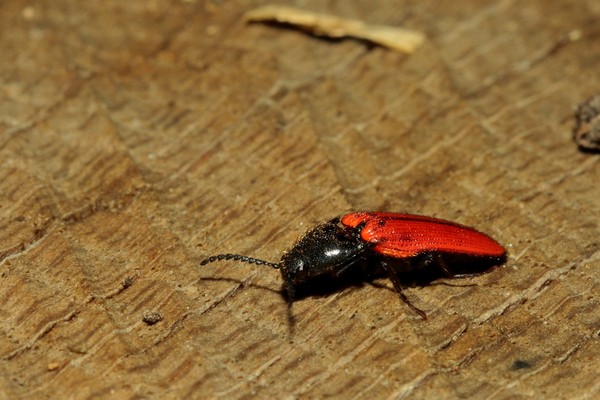
|
After a few minutes of total immobility this Ampedus cinnaberinus woke up to deploy and show its antennae. |
| [To know more about the Ampedus cinnaberinus] [Next picture] [Previous picture] [Top] |
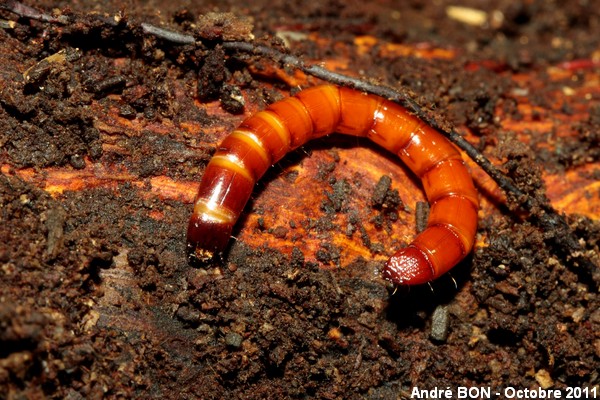
|
I have found this larva in the same stump as the Ampedus cinnaberinus above. Here is the typical shape of click beetles' larvae. They have very short legs and look like worms. The shape of the abdomen tip can give information about the genus. |
| [To know more about the Ampedus cinnaberinus] [Previous picture] [Top] |
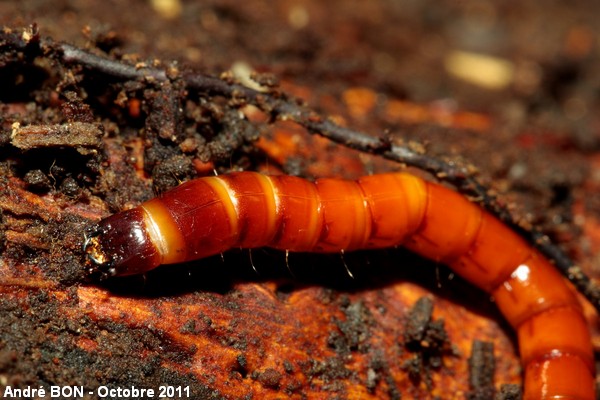
|
Here is a closer view and in particular on the head. |